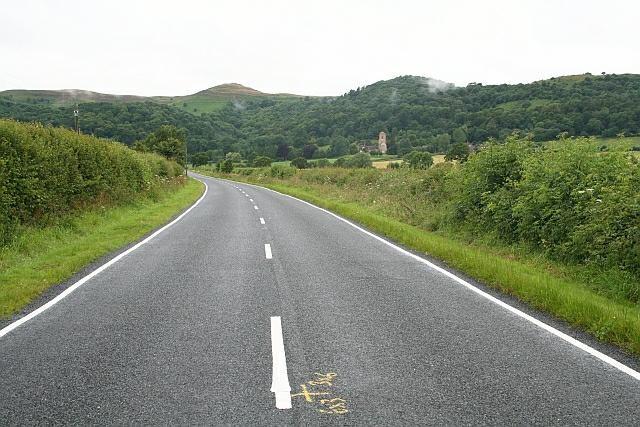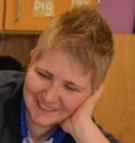By
Jen
McAleer, posted May 8, 2017 —
Estimation is a difficult
skill for many people. Take Andrew Stadel’s question from his NCTM 2017 presentation:
How long is a dashed line on the highway? See the image below.

I asked my students the same
question; this is a breakdown of their estimates:
1–2 ft.: 20 percent
2–3 ft.: 40 percent
3–4 ft.: 15 percent
4–5 ft.: 15 percent
5–6 ft.: 5 percent
6–7 ft.: 5 percent
Over 7 ft.: 0 students
Much to my students’
surprise, the actual answer is between 10–12 ft.
Estimation is a practiced yet
often undervalued skill in the mathematics classroom. Too frequently, we use
estimation as an isolated practice at the end or at the beginning of class and
generally spend only two to five minutes on it. An estimation activity is
viewed as something fun that gets students involved, but it is often not
discussed beyond “Yea, you were close!” Estimation can be much more. Presenting
an estimation activity should be an opportunity to refine and make our
estimating skills more precise.
In my school, we have pushed
to have estimation be a part of our daily routine. In many classrooms that I
have visited, I have noticed that the estimation activity is simply a warm-up
and is disconnected from the mathematics the students will be learning. When we
consistently disconnect estimation, students will not connect the value of
using estimation when performing more precise mathematics. No wonder we aren’t
good at estimating.
We are constantly robbing our
students of opportunities to jump into mathematics using what every child has: intuition.
Some students have better estimation skills than others, but providing
opportunities for students to discuss how they approach estimation is important
and necessary in our classrooms. We must make time for these types of exercises,
and these opportunities should not be brief or an activity rated “correct or
incorrect.” Talking about possible approaches to a task and refining these
approaches is just as important if not more so.
One conclusion we have reached
at my school is that not all estimation activities should revolve around finding
the amount of candy in a jar. Note: Never ask a student to take a
wild guess; you will get answers ranging
from 1 to 1,000,000. In fact, to ask for a “wild guess” oversimplifies the
process and meaning of estimation. It is not a bad estimation task, but it
should not be the
only task. Estimation
questions that deal with time, distance, and volume, for example, are just as
valuable and allow students to see the connection between mathematics and the
world around them.
Estimation activities cannot
be done in isolation within a math class. They should be part of the
conversation of mathematics and should lead to the discovery of efficient ways
to mathematize the world. They cannot and should not be relegated to five-minute
warm-ups or exit ticket exercises in which the reward is whether the student is
right or wrong. We need to find the time to do these tasks thoughtfully and
carefully in the classroom.
In my next post, I will be discussing best practices for how to implement
estimation into your classroom.
 Jen McAleer is the head of middle school mathematics
(grades 6–8) at the Carroll School in Lincoln, Massachusetts. The Carroll
School serves students with language- based learning difficulties who also tend
to struggle with mathematics. McAleer has been teaching middle school for ten years
and has a passion to give all students a voice in mathematics and provide them
with opportunities to be and feel successful working with higher-level content,
despite their struggles with procedures and computation.
Jen McAleer is the head of middle school mathematics
(grades 6–8) at the Carroll School in Lincoln, Massachusetts. The Carroll
School serves students with language- based learning difficulties who also tend
to struggle with mathematics. McAleer has been teaching middle school for ten years
and has a passion to give all students a voice in mathematics and provide them
with opportunities to be and feel successful working with higher-level content,
despite their struggles with procedures and computation.